#valois berry
Text

Marie de Berry (1375-1434), Duchess of Auvergne, Countess of Montpensier, was a French princess during the Hundred Years' War. Daughter of Jean, Duke of Berry, she was successively married to Louis de Châtillon, to the Constable of France Philippe d'Artois Count of Eu, and then to Jean, future Duke of Bourbon.
Marie was the youngest daughter of Prince Jean, Duke of Berry, brother of King Charles V of France, and his first wife, Jeanne d'Armagnac.
#royaume de france#maison de valois#marie de berry#maison de bourbon#valois berry#full-length portrait#full length portrait
9 notes
·
View notes
Text
Marie de Berry

The possibilities for political action were greatest when the mother succeeded in taking over as regent. Marie de Berry was married to Jean I, duke of Bourbon, in 1400. The duke was taken prisoner at the battle of Azincourt, and died in prison in 1434. Marie attempted to negotiate his release and the dauphin provided money for his ransom. However, the duke's acceptance of the treaty of Troyes and of Henry VI in 1429 precluded his return home. Their son was only aged twelve in 1415 and Marie assumed his guardianship and the rule of the duchy in order to try to safeguard its territory. Her husband gave her formal permission to exercise power only in his absence in 1417. Over the years that followed, Marie faced considerable problems arising out of the conflict of Armagnacs and Burgundians. Difficulties also arose over the duchy of Auvergne which her father, John, duke of Berry, in 1386 had declared would revert to the Crown if he died without a male heir, but which Charles VI had agreed at the time could pass to Marie and her husband. On her father's death in 1416 Marie occupied the two main strongholds of the duchy, but she was only allowed to do homage two years later, and it was not until 1425 that Auvergne was handed over by Charles VII at the time of her son's marriage to Agnes of Burgundy. Marie retired from power in 1427 when her husband gave his son the right to administer the duchy.
Jennifer C. Ward- Noblewomen, Family, and Identity in Late Medieval Europe- in Nobles and Nobility in Medieval Europe
#xiv#xv#jennifer c.ward#nobles and nobility in medieval europe#marie de berry#valois princesses#duchesses de bourbon#duchesses d'auvergne#hundred years war#jean i de bourbon#battle of azincourt#jean i de berry#armagnacs vs bourguignons#charles i de bourbon#agnès de bourgogne#charles vii
10 notes
·
View notes
Text
Les Mis Letters - 1.3.1 - The Year 1817
It’s the chapter that feels like the literary equivalent of “We Didn’t Start the Fire,” so I thought the best summary would be through song…
Restoration, monarchy, and the French Academy
The third book of Les Miserables starts with context
From gibbet to the guillotine, headlines lay the scene
Of 1817 and all that will come next.
Mathurin Bruneau (Not a Louis? Gotta go!)
Berri for Sicily fell, Brugiere is a hot sell
Napoleon is turning green; Louis, Number Eighteen
Picard at the Odeon until the curtain fell.
It’s book three of the novel
We just met Valjean, and now we’re moving on
It’s book three of the novel
Until we meet Fantine, it’s 1817.
Abbé Louis: Finance; Talleyran: Chambellan
Pellegrini, Bigottini, Potier, applause
Lord Byron, Saint-Simon, David d'Angers rock on!
Selves to Egypt goes, Colonel to Pasha.
Madame Saqui goes on tour; Prussians from the last war
Cardinal Fesch won’t give up yet, (a Bonaparte, I’ll bet)
Felicite de La Minais, another Bossuet
Fabvier in Lyon, Civil Code is going strong.
It’s book three of the novel
We just met Valjean, and now we’re moving on
It’s book three of the novel
Until we meet Fantine, it’s 1817.
Divorce gets the sack, Catholic church is coming back
Hotel de Cluny, La Harpe and Thermes
Riverside Conspiracy, Black Pin goes free
Cafe Lembin has their champ, Valois in the Bourbon camp.
Elba to St. Helena, everyone is telling ya
The Meduse quite a mess, Gericault a success
Steamboat (useless thing), fossils and piety
French Academy theme: Happy when you study.
It’s book three of the novel
We just met Valjean, and now we’re moving on
It’s book three of the novel
Until we meet Fantine, it’s 1817.
Paer plays L’Agnese for the Duke of Orleans
Loyson getting old, envy grows bold
Charles Dauton lost his head, Ourika is being read
Blue ribbons, big hems, powdered wigs are out again
Austerlitz is being changed, government is rearranged
Getting over awful weather in our new morocco leather!

No divorce, you’re stuck with me; traitors land on their feet
General Bourmont, Bonapartist? (or not?)
Pierre-Paul Royer-Collard wants baser to stay small
Gregoire wants in parliament, can’t the man just take a hint?
Two years from the Hundred Days, a few years from the new craze.
Flotsam floats confusedly, pell-mell through history
Parisians now take the stage, arranging a fine game.
Where’s Valjean? Who’s Fantine? Someone say before I scream!
It’s book three of the novel
We just met Valjean, and now we’re moving on
It’s book three of the novel
Back to Jean Valjean
As Victor Hugo tangents on, and on, and on, and on, and on, and on, and on…
…
A big thanks to The Siècle Podcast’s research that made this random idea possible:
http://thesiecle.com/supplemental11/
84 notes
·
View notes
Text
Ages of French Princesses at First Marriage
I have only included women whose birth dates and dates of marriage are known within at least 1-2 years, therefore, this is not a comprehensive list.
This list is composed of princesses of France until the end of the House of Bourbon; it does not include Bourbon claimants or descendants after 1792.
The average age at first marriage among these women was 15.
Judith of Flanders, daughter of Charles the Bald: age 12 when she married Æthelwulf, King of Wessex in 856 CE
Rothilde, daughter of Charles the Bald: age 19 when she married Roger, Count of Maine in 890 CE
Emma of France, daughter of Robert I: age 27 when she married Rudolph of France in 921 CE
Matilda of France, daughter of Louis IV: age 21 when she married Conrad I of Burgundy in 964 CE
Hedwig of France, daughter of Hugh Capet: age 26 when she married Reginar IV of Hainault in 996 CE
Gisela of France, daughter of Hugh Capet: age 26 when she married Hugh of Ponthieu in 994 CE
Hedwig of France, daughter of Robert II: age 13 when she married Renauld I, Count of Nevers in 1016 CE
Adela of France, daughter of Robert II: age 18 when she married Richard III of Normandy in 1027 CE
Constance of France, daughter of Philip I: age 16 when she married Hugh I, Count of Troyes in 1094 CE
Cecile of France, daughter of Philip I: age 9 when she married Tancred, Prince of Galilee in 1106 CE
Constance of France, daughter of Louis VI: age 14 when she married Eustace IV, Count of Boulogne in 1140 CE
Marie of France, daughter of Louis VII: age 14 when she married Henry I, Count of Champagne, in 1159 CE
Alice of France, daughter of Louis VII: age 14 when she married Theobald V, Count of Blois in 1164 CE
Margaret of France, daughter of Louis VII: age 14 when she married Henry the Young King in 1172 CE
Alys of France, daughter of Louis VII: age 35 when she married William IV of Ponthieu in 1195 CE
Agnes of France, daughter of Louis VII: age 8 when she married Alexios II Komnenos in 1180 CE
Marie of France, daughter of Philip II: age 13 when she married Philip I of Namur in 1211 CE
Isabella of France, daughter of Louis IX: age 14 when she married Theobald II of Navarre in 1255 CE
Blanche of France. daughter of Louis IX: age 16 when she married Ferdinand de la Cerda in 1269 CE
Margaret of France, daughter of Louis IX: age 16 when she married John I, Duke of Brabant in 1270 CE
Agnes of France, daughter of Louis IX: age 19 when she married Robert II, Duke of Burgundy in 1279 CE
Blanche of France, daughter of Philip III: age 22 when she married Rudolf III of Austria in 1300 CE
Margaret of France, daughter of Philip III: age 20 when she married Edward I of England in 1299 CE
Isabella of France, daughter of Philip IV: age 13 when she married Edward II of England in 1308 CE
Joan II of Navarre, daughter of Louis X: age 6 when she married Philip III of Navarre in 1318 CE
Joan III, daughter of Philip V: age 10 when she married Odo IV, Duke of Burgundy in 1318 CE
Margaret I, daughter of Philip V: age 10 when she married Louis I of Flanders in 1320 CE
Isabella of France, daughter of Philip V: age 11 when she married Guigues VIII of Viennois in 1323 CE
Blanche of France, daughter of Charles IV: age 17 when she married Philip, Duke of Orleans in 1345 CE
Joan of Valois, daughter of John II: age 9 when she married Charles II of Navarre in 1352 CE
Marie of France, daughter of John II: age 20 when she married Robert I, Duke of Bar in 1364 CE
Isabella, daughter of John II: age 12 when she married Gian Geleazzo Visconti in 1360 CE
Catherine of France, daughter of Charles V: age 8 when she married John of Berry, Count of Montpensier in 1386 CE
Isabella of Valois, daughter of Charles VI: age 6 when she married Richard II of England in 1396 CE
Joan of France, daughter of Charles VI: age 5 when she married John V, Duke of Brittany in 1396 CE
Michelle of Valois, daughter of Charles VI: age 14 when she married Philip III, Duke of Burgundy in 1409 CE
Catherine of Valois, daughter of Charles VI: age 19 when she married Henry V of England in 1420 CE
Catherine of France, daughter of Charles VII: age 12 when she married Charles I, Duke of Burgundy in 1440 CE
Joan of France, daughter of Charles VII: age 12 when she married John II , Duke of Bourbon in 1447 CE
Yolande of Valois, daughter of Charles VII: age 18 when she married Amadeus IX, Duke of Savoy in 1452 CE
Magdalena of Valois, daughter of Charles VII: age 18 when she married Gaston, Prince of Viana in 1461 CE
Anne of France, daughter of Louis XI: age 12 when she married Peter of Bourbon in 1473 CE
Joan of France, daughter of Louis XI: age 12 when she married Louis XII in 1476 CE
Claude of France, daughter of Louis XII: age 15 when she married Francis I in 1514 CE
Renée of France, daughter of Louis XII: age 18 when she married Ercole II d'Este in 1528 CE
Madeleine of Valois, daughter of Francis I: age 17 when she married James V of Scotland in 1537 CE
Margaret of Valois, daughter of Francis I: age 36 when she married Emmanuel Philibert, Duke of Savoy in 1559 CE
Elisabeth of Valois, daughter of Henry II: age 13 when she married Philip II of Spain in 1559 CE
Claude of Valois, daughter of Henry II: age 12 when she married Charles III, Duke of Lorraine in 1559 CE
Margaret of Valois, daughter of Henry II: age 19 when she married Henry IV in 1572 CE
Elisabeth of France, daughter of Henry IV: age 13 when she married Philip IV of Spain in 1615 CE
Christine of France, daughter of Henry IV: age 13 when she married Victor Amadeus I, Duke of Savoy in 1619 CE
Henrietta Maria of France, daughter of Henry IV: age 16 when she married Charles I of England in 1625 CE
Louise Élisabeth of France, daughter of Louis XV: age 12 when she married Philip, Duke of Parma in 1739 CE
Marie-Thérèse, daughter of Louis XVI: age 21 when she married Louis Antoine, Duke of Angoulême in 1799 CE
20 notes
·
View notes
Text
i meant to post a new starter call at the first of the month, but couldn't so doing this now. they're going to be mostly song lyric starters because brain tired, words hard 😂
alina starkov \ (0/4)
alison dilaurentis \ (0/4)
anakin solo \ (0/4)
azriel \ (0/4)
belly conklin \ (0/4)
cat cordella \ (0/4)
elide lochan \ (0/4)
elizabeth afton/circus baby \ (0/4)
francis de valois \ (0/4)
gale weathers \ (0/4)
gu mang \ (0/4)
jing qi/jing beiyuan \ (0/4)
juliette ferrars \ (0/4)
kate bishop \ (0/4)
liam mairi \ (0/4)
nancy drew \ (0/4)
nesta archeron \ (1/4) elain archeron. all starters will be set after elain’s and after nesta’s memories are back.
noa olivar \ (4/4) mouse honrada, jyn erso, gabriel, annabeth chase
paedyn gray \ (4/4) lu jinyi, sloane mairi, kurt hummel, violet sorrengail
persephone \ (3/4) nico di angelo, hazel levesque, quinn fabray
phoebe halliwell \ (0/4)
piper mclean \ (3/4) nico di angelo, ivan carvalho, silena beauregard
quan yizhen \ (0/4)
rachel berry \ (2/4) brittany pierce, parvati patil
rhiannon crochan ii \ (0/4)
rowan whitethorn \ (0/4)
ruhn danaan \ (0/4)
sarah cameron \ (0/4)
sawyer \ (0/4)
tairn \ (0/4)
van palmer \ (0/4)
vex'ahlia de rolo \ (0/4)
willow rosenberg \ (2/4) allison argent, angel
xue meng \ (0/4)
xue yang \ (0/4)
yrene towers \ (0/4)
yushi huang \ (0/4)
8 notes
·
View notes
Video
CPKC 133 por Michael Berry
Por Flickr:
It's a rainy afternoon as military unit CP 6644 leads intermodal train CPKC 133 past Valois Station, built by CP Rail many decades back.
2 notes
·
View notes
Photo
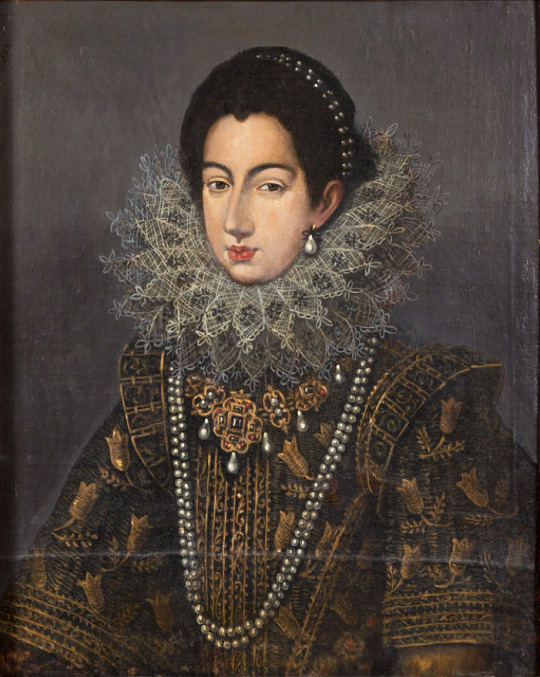
Isabella of Savoy (11 March 1591 – 28 August 1626) was a daughter of Charles Emmanuel I, Duke of Savoy, and Catherine Michaela of Spain. Her maternal grandparents were Philip II of Spain and Elisabeth of Valois, her paternal grandparents were Emmanuel Philibert, Duke of Savoy and Margaret of France, Duchess of Berry. She was the Hereditary Princess of Modena, dying before her husband succeeded to the Duchy of Modena in 1628.
12 notes
·
View notes
Text

this here is a fandom based starter call for my muses in...
siren && reign && glee && euphoria
i'll list them under the cut and all i ask is you let me know who you'd like a starter from.
Ryn Fisher
Maddie Bishop
♥♥♥♥♥♥
Mary Stuart
Claude de Valois
Lady Kenna
♥♥♥♥♥♥
Marley Rose
Rachel Berry
Kitty Wilde
♥♥♥♥♥♥
Lexi Howard
Quinn Adamson(oc)
#indie reign rp#indie historical rp#indie rp#indie oc rp#indie human rp#indie college rp#reign rp#historical rp#siren rp#mermaids rp#indie siren rp#euphoria rp#indie euphoria rp#&ooc#&startercall#indie glee rp#glee rp#glee indie
3 notes
·
View notes
Text
Marguerite de Valois-Angoulême, duchesse de Berry
Madame de Savoïe. Marguerite de Valois-Angoulême, duchesse de Berry (1523–1574)
Madame de Savoïe
Marguerite de Valois-Angoulême, duchesse de Berry (1523–1574)
Black pencil and red chalk.
Marguerite de France, the fourth daughter of King Francis I of France and Claude, Duchess of Brittany, was born in Saint-Germain-en-Laye on 5 June 1523 and married the Duke of Savoy, Philibert-Emmanuel, on 9…
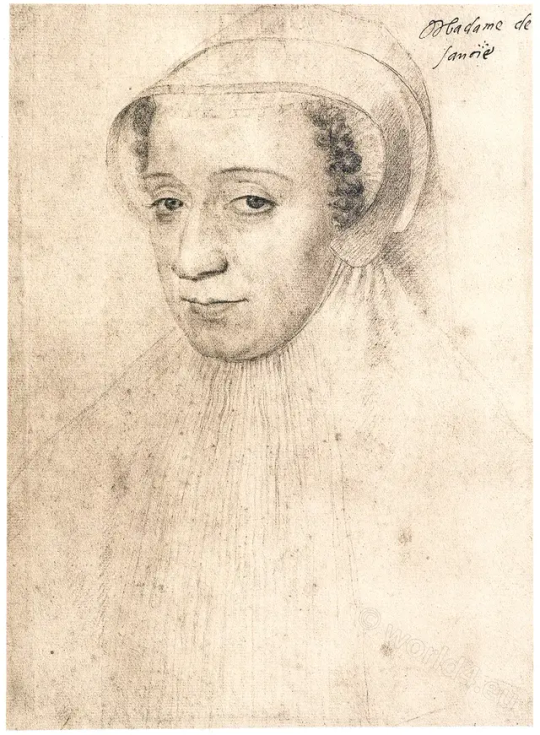
View On WordPress
0 notes
Text

felicidades, caitlin, y bienvenido a sevilla ! you have been accepted as your second muse, agathe of burgundy, our duchess of burgundy (margot robbie). please be sure to review our guidelines, welcome checklist, and send in your blog within twenty-four hours.
♱ [agathe of burgundy – margot robbie – 38 – duchess of burgundy] ♱ bienvenidos AGATHE. you hail from FRANCE and have been risen to the position of a DUCHESS. you are a member of the house of BERRY / VALOIS-BURGUNDY and will go down in history as the THE SHE-WOLF OF BURGUNDY. though you are VINDICTIVE & PREDATORY, you are blessed with being BLADE-SHARP and SPIRITED. ♱ [caitlin – she/her]
1 note
·
View note
Photo

Portait of Bonne de Berry, wife of Amedeo VII of Savoy.
Bonne was the eldest daughter of Prince Jean, Duke of Berry, brother of King Charles V of France, and his first wife Jeanne, daughter of Count Jean I of Armagnac. She was named in memory of her paternal grandmother, Bonne de Luxembourg, sister of Emperor Charles IV and daughter of John I of Bohemia, known as the Blind.
#italian aristocracy#house of savoy#casa savoia#bonne de berry#maison de valois#royaume de france#full-length portrait#french aristocracy#kingdom of italy#full length portrait
9 notes
·
View notes
Text
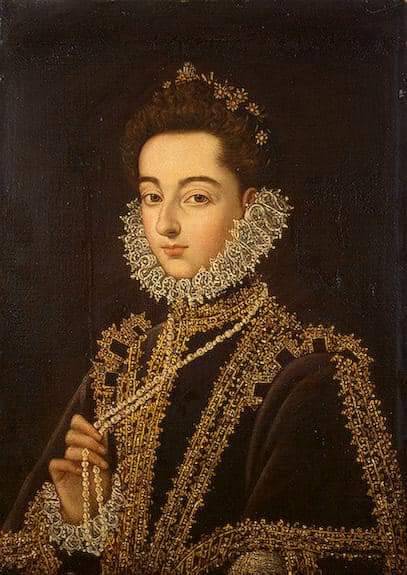
10 DE OCTUBRE DE 1567 NACE CATALINA MICAELA
Nace en Madrid,hija de Felipe II y de Isabel de Valois
Tanto padre e hija no pudieron disfrutar mucho de su mutua compañía.Cualquiera de sus dos hijas era un as en la manga del soberano a la hora de conseguir una buena alianza política
En este caso la moneda de cambio fue la menor de las hermanas,Catalina Micaela,
mientras que su hermana mayor Isabel Clara Eugenia,se convertía en la mano derecha del monarca
La figura de Catalina siempre palideció a la sombra de su hermana;sin embargo,fue un personaje clave en la política exterior de su padre.Ya que su matrimonio con el duque de Saboya y la consiguiente alianza entre ambas coronas garantizaba la posibilidad de franquear libremente el paso de los Alpes y aseguraba la comunicación entre los territorios hispánicos del norte de Europa y los del sur
La Infanta,en principio no estaba conforme con el matrimonio,era muy joven,no quería separarse de su familia,y considera que un duque es poca cosa para la hija del monarca más poderoso de Europa
Carlos Manuel I de Saboya,hijo único de Manuel Filiberto de Saboya y de Margarita de Berry(tía de Isabel de Valois).Era un hombre de carácter abierto,seguro de sí mismo y un gran militar.Fue un hombre galante y seductor a pesar de una ligera corcova,que solía disimular con amplias capas
Zaragoza fue la ciudad elegida para la boda.
Congregó a multitud de gente.La fecha prevista era el 11 de marzo 1585,en la Seo
Catalina vestía de terciopelo grana bordado con hilos de oro y piedras preciosas;el Duque
uniforme amarillo,recamado de perlas y botonadura de diamantes
El mal tiempo obligó a suspender la mayor parte de los festejos
El 2 de Abril ponen rumbo a Barcelona,en cuyo puerto estaba previsto que embarcaran con destino a Génova.Pero el viaje se aplazó,ya que los dos cayeron enfermas
Por fin el 13 de Junio,fue la fecha fijada para que los recién casados regresaran a tierras Piamontesas
La despedida fue dramática,Catalina Micaela se niega a recibir una sarta de perlas,que su padre le ofrece como regalo de despedida,.
Ella aduce que era demasiado para quien solo era la esposa de un Duque
Sin poder contenerse la recién casada se abrazó a su hermana y a su padre deshecha en lágrimas y rota de dolor por la separación que se preveía definitiva
No solo su esposo quedó rendido a su encanto; cortesanos y pueblo la adoraban, y ella secundó siempre a su esposo,se entregó en la tarea de hacer de Turín una auténtica capital europea.
Durante las ausencias de su esposo actuó como regente, y tomo decisiones acertadas y prudentes
Cumplió con la condición de vientre fértil,que se exigía a toda princesa. Del matrimonio nacieron: Felipe Emanuel,Victor Amadeo,Filiberto Manuel,Margarita, Isabel,Mauricio,María Apolonia,Francisca Catalina y Tomas Francisco
En 1597, fallece Catalina Micaela tras parir a una niña (Juana,que apenas alentó unas horas)
Su muerte fue devastadora tanto para su marido como para su padre. Carlos Manuel se retiró 3 meses a un monasterio y su padre Felipe se encerró en su cámara, ordenó decir misa de difuntos pero no se vio con fuerzas para presidirla
Fuente/ Las mujeres de Felipe II
AUTOR/ María Pilar Queralt Del Hierro
SANCHEZ COELLO- EL PRADO
1 note
·
View note
Text
youtube
Watch the 2024 American Climate Leadership Awards for High School Students now: https://youtu.be/5C-bb9PoRLc
The recording is now available on ecoAmerica's YouTube channel for viewers to be inspired by student climate leaders! Join Aishah-Nyeta Brown & Jerome Foster II and be inspired by student climate leaders as we recognize the High School Student finalists. Watch now to find out which student received the $25,000 grand prize and top recognition!
#ACLA24#ACLA24HighSchoolStudents#youtube#youtube video#climate leaders#climate solutions#climate action#climate and environment#climate#climate change#climate and health#climate blog#climate justice#climate news#weather and climate#environmental news#environment#environmental awareness#environment and health#environmental#environmental issues#environmental education#environmental justice#environmental protection#environmental health#high school students#high school#youth#youth of america#school
15K notes
·
View notes
Text
H De mera espectadora dos eventos, a noiva do São Bartolomeu, Margarida de Valois, foi devolvida ao seu lugar de protagonista, graças à pena de Alexandre Dumas. Migrou do reino da história para o da ficção, onde encontrou súditos fieis, que não cansam de lhe render sincera homenagem. O sucesso da rainha Margot, porém, não ficou restrito apenas ao mundo da literatura. Em 1909, o romance de Dumas foi adaptado pela primeira vez para o cinema por Camille de Morhlon, seguido por uma versão de 1954, dirigida por Jean Dréville. Mas foi com a adaptação de Patrice Chéreau, de 1994, que a história de Margot atingiu em cheio o gosto popular, fazendo do filme franco-italiano-alemão num dos dramas históricos mais queridos dos últimos vinte anos. Com um elenco talentoso, figurino impecável, locações bem escolhidas e uma belíssima trilha sonora composta por Goran Bregović, “La reine Margot” consegue manter o espectador atendo do início ao fim. O roteiro, escrito por Danièlle Thompson e Chéreau, mistura partes do romance de Dumas com a peça “O massacre em Paris”, escrita pelo dramaturgo inglês Christopher Marlowe. A produção ficou por conta de Claude Berri, com distribuição da Miramax Films.
0 notes
Photo

Margaret of France, Duchess of Berry, by Francois Clouet.
#margaret of france#duchess of berry#francois clouet#french monarchy#duchess of savoy#house of valois angouleme#long live the queue
19 notes
·
View notes
Photo

The Gotha Missal: Fol. 89r, Text, Master of the Boqueteaux, c. 1375, Cleveland Museum of Art: Medieval Art
This elegant Latin manuscript is known today as The Gotha Missal after its eighteenth-century owners, the German Dukes of Gotha. The volume was originally copied and illuminated in Paris around 1375 -- a commission of the Valois king, Charles V "the Wise" (1364-1380), one of the great bibliophiles of the fifteenth century and brother of Dukes Philip the Bold of Burgundy and Jean de Berry. Manuscript missals were not intended for the lay user, but rather for the use of the celebrant at Mass. The present volume was therefore meant to be used by the king's private chaplain and was probably housed in Charles's private chapel, possibly in his principle residence, the Palace of the Louvre (demolished in the sixteenth century). The main decorative body of the missal consists of two full-page miniatures comprising the Canon of the Mass and twenty-three small miniatures. The style and high quality of the decoration points to its inclusion withing a select group of manuscripts accepted today as from the hand of Jean Bondol. Bondol was active at the court of Charles V from 1368 until 1381 where he headed the court workshop and also served as the king's valet de chambre. The blind-tooled leather binding dates to the fifteenth century.
Size: Codex: 27.1 x 19.5 cm (10 11/16 x 7 11/16 in.)
Medium: ink, tempera, and gold on vellum; blind-tooled leather binding
https://clevelandart.org/art/1962.287.89.a
92 notes
·
View notes
Photo
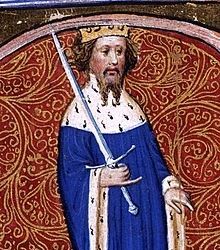
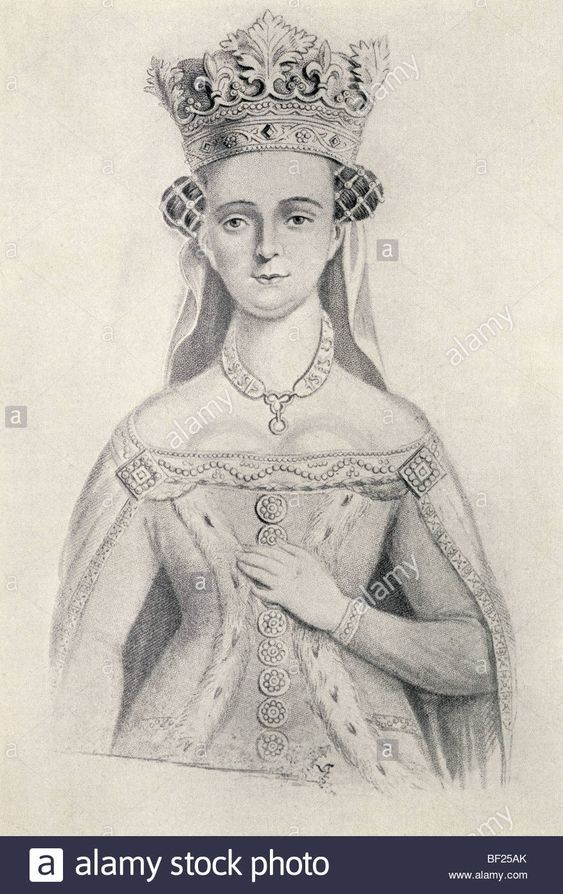
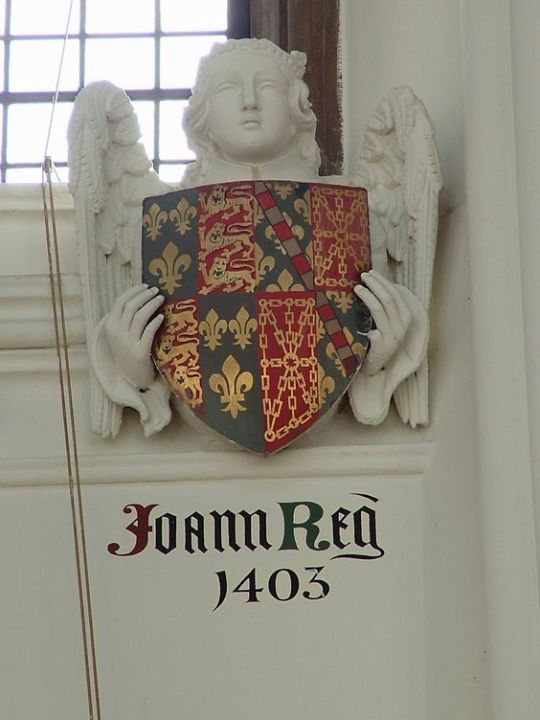
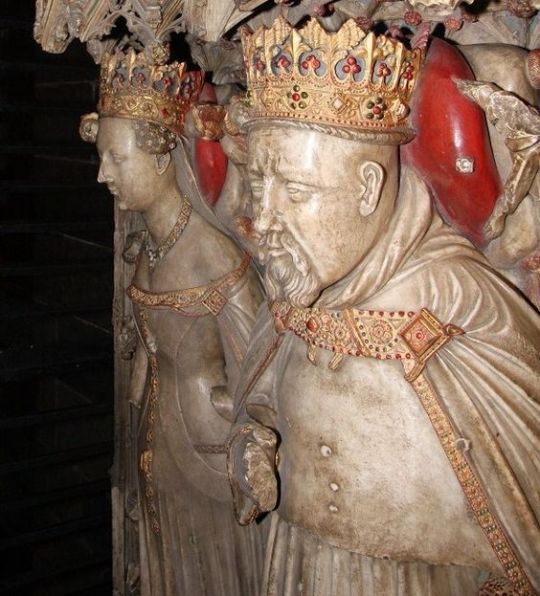
“Henry's relationship with the widow Joan of Navarre was one of the real surprises of his reign. She was the same age as him, the daughter of Charles the Bad, king of Navarre, and Joan de Valois, daughter of King John II of France. Thus she was Henry's third cousin twice over.
By her previous husband, the duke of Brittany, she had eight children. Following the duke's death, she had acted as regent in Brittany during the minority of her eldest son. She was not just a Navarrese princess, she was an import ant member of the French royal family.
Such a match was bound to cause shock waves in so ciety, on both sides of the Channel. England was on the verge of war with France, and had been since the revolution. As recently as November 1401 the council was considering the question of how ‘to counter the malice of those of France who wanted war'. Such was the fear that it was deemed necessary to summon a great council to discuss the matter in January. Henry accordingly kept his discussions about the marriage secret. Nevertheless, he could hardly conceal the presence of Navarrese ambassadors at his court.
When his council asked what the ambassadors had come to talk about, he would say only that they would be told in due course. Although it is not known when Henry and Joan first met, they were probably already acquainted when Henry travelled to France for the celebrated meeting at Ardres in 1396 and the subsequent royal wedding at Calais.
On that occasion he stayed almost a month in France, and had several opportunities to see her. They would have met again at the Garter feast at Windsor in April 1398, which Joan attended with her husband. It is likely that they met again during Henry's exile, when his marriage to Mary of Berry was being discussed.
No marriage at this stage was possible, of course, as the duke of Brittany was still alive. But after the old duke's death in November 1399 it seems that the idea swiftly entered Joan's mind, if not Henry's too. Within three months she sent ambassadors to Henry, and on 15 February 1400 wrote him a letter which is almost intimate in its expression of good wishes:
‘My most dear and honoured lord and cousin,
Forasmuch as I am eager to hear of your good estate -which may our Lord make as good as your noble heart. For whenever I am able to hear a good account of you, my heart rejoices exceedingly.
And if, of your courtesy, you would like to hear the same from over here-thank you-at the time of writing my children and I are all in good health (thanks be to God, and may He grant the same to you) as Joanna de Bavelen, who is bringing these letters to you, can explain more plainly...
And if anything will please you that I am able to do over here, I pray you to let me know; and I will accomplish it with a very good heart according to my power. My most dear and honoured lord and cousin, I pray the Holy Ghost that He will have you in his keeping.
Written at Vannes, 15 February, the duchess of Brittany’
The tone of this letter leaves no doubt that there was a genuine closeness between Henry and Joan. It goes far beyond the usual politeness between a member of the French royal family and the king of England, especially considering that it was written a few days after the English ambassadors at Calais had warned Henry that war with France was more likely than peace.
But there is more here to suggest a genuine closeness. Intimacy is the sole purpose of the letter: apart from its kind thoughts, it says nothing of consequence. It implies-in Joan's thanks to Henry for asking after her health-that he had already written a letter to her. And it reveals that Joan, like Henry himself, was a believer in the power of the Trinity (as shown by the reference to the Holy Ghost).
They were more than just friends; they shared a spiritual outlook.Their courtship was conducted in secret and from afar. Ambassadors conveyed their communications to each other, never putting anything in writing as sensitive as the above letter.
The obstacles to their relationship were not just limited to the likelihood of war between their countries and the disapproval of the French Crown. France recognised the pope at Avignon, Benedict XIII; the English recognised the Roman pontiff, Boniface IX. In order for Henry and Joan to marry, they had to obtain a dispensation, as they were related within the degrees of consanguinity prohibited by the Church. Not until 20 March 1402 did Joan obtain a bull from Pope Benedict allowing her to marry Henry. Immediately she empowered her ambassadors, Antony and John Rhys, to arrange the ceremony. They did so with great speed.
She was married to Henry by proxy just two weeks later, at Eltham, on 2 April 1402. Present to witness proceedings were Henry's half-brother, John Beaufort, and several of his closest friends, including the archbishop of Canterbury and all three Percys, namely the earls of Northumberland and Worcester, and Hotspur.
The form of words used on this occasion included 'thereto I plight thee my troth', the first recorded appearance of the well-known phrase. Marriage was just the beginning of the struggle. As soon as the deed was done, Henry had to explain to his kingdom why he was marrying a Frenchwoman at this particular time. The English people were astonished.
For her part, Joan had to arrange with the rest of the French royal family how she could marry their enemy: the man who had ousted King Charles's son-in-law and thus deprived his daughter of the throne of England. She also had to persuade Benedict XIII to grant her permis sion to live among schismatics (those who supported his papal rival).
But Joan was a resourceful and determined woman. Henry too had made up his mind.These problems show that this was far from being a marriage of convenience. So it is likely that it was yet another royal love affair, like so many royal partnerships in the late middle ages. Yet all royal marriages have a political dimension, however emotionally and spiritually close the couple may have been.
In Henry's case this is made clear by simultaneously arranging his two daughters' marriages as well as his own. Blanche was already betrothed to the son of the Holy Roman Emperor, and was about to set out for the Rhineland; and Philippa's hand was the subject of discussion between Henry and the king of Denmark. These multiple negotiations indicate that Henry was looking at connections with ruling houses not just to cement alliances with other countries but in order to achieve a wider recognition of his dynasty. If he could persuade everyone else in Europe to accept him as the rightful king of England, and if he himself could marry a French duchess, how much longer could the French refuse to recognise him as king of England? [...]
Henry had at last found in his new wife the sort of companionship he had lost with Mary's death, nearly nine years before. In the early years of his reign we find occasional references to his pastimes--sword-fighting and hunting, and even an idiot or fool--but other wise his time was heavily employed in the relentless business of state.
There was precious little time for enjoyment, and only a handful of trusted old friends with whom to spend it. Now he had a constant, intelligent and trustworthy companion. She was passionate and determinedly loyal. She was also a woman with whom Henry could discuss business. Joan had, after all, managed the affairs of the duchy of Brittany.
The following year Henry granted her a tower at Westminster in which to maintain an office. The business she took on in cluded holding councils, handling and auditing accounts, and keeping charters and similar documents. She was clearly a hands-on sort of woman, more inclined to administrative duties than needlework. In that, too, she seems to have been a good match for the king.”
[MORTIMER, I. “Henry IV: The Righteous King.”]
#Joan of Navarre#Jeanne de Navarre#Jehanne de Navarre#Duchesse de Bretagne#Duchess of Brittany#Queen of England#Queen Joan#Queen Joanna#Joanna of England#House of Lancaster#House of Navarre#Jeanne d'Evreux#House of Evreux#Henry IV#Henry of Bolinbroke#Henry Bolinbroke#King Henry IV of England#Henry IV of England
11 notes
·
View notes
Text
youtube
Watch the American Climate Leadership Awards 2024 now: https://youtu.be/bWiW4Rp8vF0?feature=shared
The American Climate Leadership Awards 2024 broadcast recording is now available on ecoAmerica's YouTube channel for viewers to be inspired by active climate leaders. Watch to find out which finalist received the $50,000 grand prize! Hosted by Vanessa Hauc and featuring Bill McKibben and Katharine Hayhoe!
#ACLA24#ACLA24Leaders#youtube#youtube video#climate leaders#climate solutions#climate action#climate and environment#climate#climate change#climate and health#climate blog#climate justice#climate news#weather and climate#environmental news#environment#environmental awareness#environment and health#environmental#environmental issues#environmental justice#environment protection#environmental health#Youtube
15K notes
·
View notes
